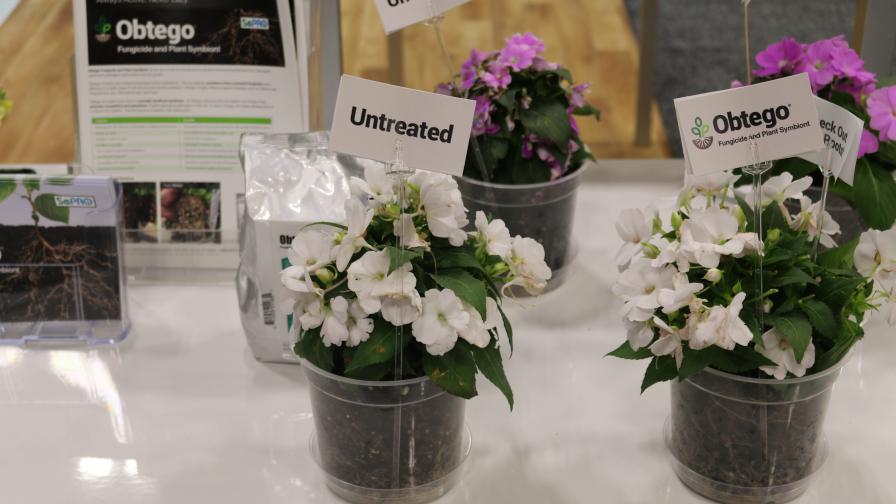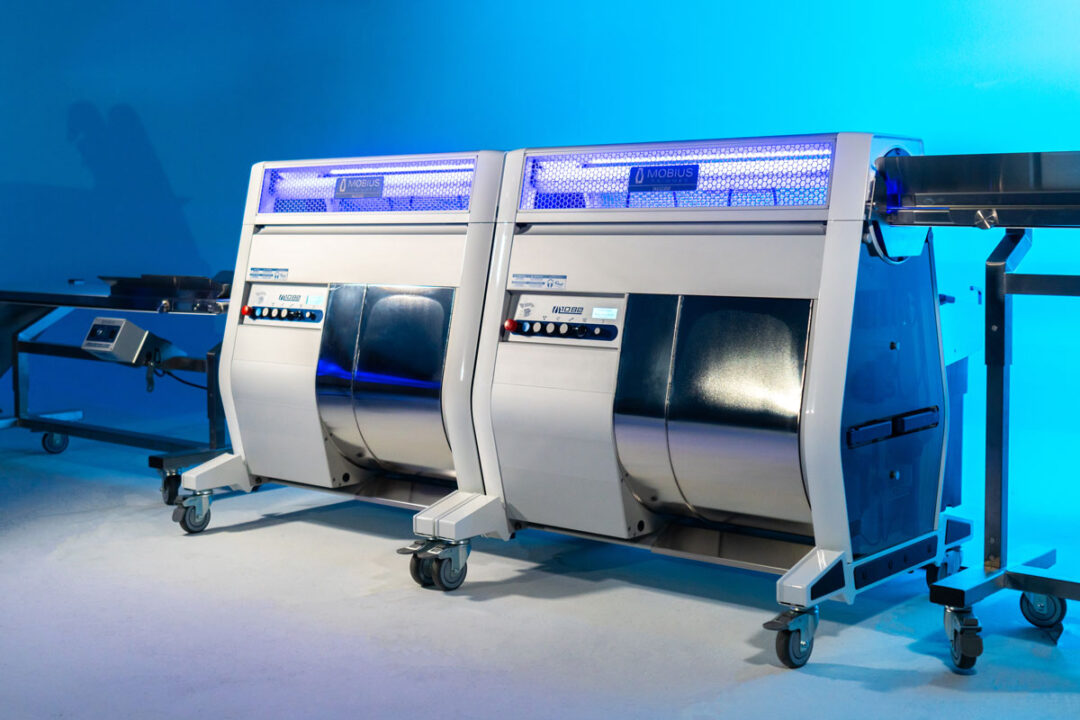BPIA Innovation Circuit at Cultivate Highlights Biological Products

SePRO was one of six companies featured on the Biological Products Industry Alliance’s (BPIA) “Innovation Circuit” booth tour at Cultivate ’19 in Columbus, OH.
One of the strongest signals from this year’s sunny Cultivate ’19 trade show in Columbus, OH, was the continued ascension of biological controls and products in the ornamentals and protected ag markets.
From the education sessions to the trade show floor, talk of using naturally derived products – at times in conjunction with traditional chemistry, at times in replacement – proved ubiquitous during the annual horticulture blowout.
Michael Brownbridge, Research Director, Horticultural Production Systems at the Vineland Research & Innovation Centre in Ontario, Canada, delivered his New Biological Solutions: Implications for Greenhouse IPM presentation Saturday morning, where the researcher offered compelling data (70% adoption rate among greenhouse growers in Ontario in 2018) showing biological products are here to stay.
“Biological control is the future, and will only get better and better, I think,” he says. “Years ago, we were voices in the wilderness advocating for biocontrol, but since then it’s gone mainstream.”
BPIA Speaks
On Monday afternoon at the show, Keith Jones, Executive Director of the Biological Products Industry Alliance (BPIA), organized a trade show walk-around dubbed the “Innovation Circuit” to showcase the growing number of companies and products transforming the space with new formulations and solutions.
“BPIA organized the Innovation Circuit to gather selected industry influencers, including Extension professionals, educators, and the media, to provide them with a guided tour of the trade show and focus their attention on several innovative BPIA member companies presenting their newest biopesticide and biostimulant products,” Jones says.
BASF, Gowan, OHP, Marrone Bio Innovations, BioSafe, and SePRO hosted the contingent at each companies’ respective booth as part of the impromptu tour.
New Biocontrol Products for the Greenhouse
At the BASF (Mannheim, Germany) booth, the group heard about Velifer, a new fungal contact insecticide available August 1 for control of aphids, thrips, spider mites, and other pests in the greenhouse.
The active ingredient behind Velifer is Strain PPRI 5339, which is proprietary to BASF and was discovered and synthesized in South Africa. The new product is being positioned as a biological supplement to traditional chemistry IPM programs, helping to reduce insect populations enough that other active ingredients can work as well.
The product also features a zero-day pre-harvest interval rating and no label restriction on the number of applications allowed, giving users flexibility.
Next up was Gowan USA (Yuma, AZ), where the group learned about EcoSwing (Swinglea glutinosa extract), a botanical, biologically based fungicide extracted in Medellin, Columbia.
EcoSwing, like BASFs’ Velifer, is marketed for use in conjunction with traditional chemistries in a diversified IPM portfolio, and in that setting it reportedly shows strong performance against Powdery mildew in organic wine grapes and stone fruits while also having application in ornamental and greenhouse settings.
OHP (Bluffton, SC) took its presentation in a bit of a different direction, educating the group about its entire OMRI-certified portfolio of biological-based solutions for the ornamental and specialty markets.
Acquired by AMVAC in September 2017, the company is one of a handful that overtly market its biological products to legal cannabis and hemp growers, an emerging crop that some in the space are shying away from due to its unsettled legal standing in the U.S.
With Canada a fully legal market, and industrial hemp regulations opening up in the U.S., the short preharvest intervals and overall safety biological products offer just make sense for growers of those crops.
Marrone Bio Innovations (Davis, CA) also covered the full breadth of its five-product biologicals portfolio, and the company is also one to play a bit in the legal cannabis and hemp space.
Regalia, still the company’s premier material, as well as Stargus — its newest biofungicide showing good efficacy on downy mildew, fusarium, rhizoctonia, and phytophthora — both are good candidates for use in conjunction with conventionals in an IPM program due to resistance issues with certain AIs already cropping up.
The last stops on the circuit featured SePRO (Carmel, IN) and BioSafe Systems (East Hartford, CT) both outlining their individual company philosophies and insight into baseline programs for growers looking for bio-based pest control.
SePRO talked to the group about its wide-ranging portfolio of bio-based solutions in both greenhouse produce as well as ornamental production, while BioSafe System’s baseline program of ZeroTol 2.0 OMRI- listed biofungicide in combination with OxiPhos fungicide and TerraGrow soil inoculant was highlighted as a great option for greenhouse growers. BioSafe also showed its BioCeres WP biological mycoinsecticide for whiteflies, aphids, and thrips.
Advances and Acceptance
SePRO Portfolio Leader Mark Brotherton led the tour on behalf of BPIA, and I asked Brotherton his thoughts on where biological products stand both today as well as in the near future.
“I think as BCAs are being understood at greater depth and improving in quality and efficacy, and they will continue to be integrated into growing operations,” he says. “When you look at where we are today vs Europe, we are 10 years behind.
That being said, we have made significant advancements in the last 10 years,” Brotherton adds. “It takes a different management approach to achieve the desirable level of pest management, and ultimately, plant and food quality. Overhauling growing practices that have been in place for decades doesn’t happen overnight.”
Asked his thoughts on the prevalence of greenhouse IPM systems consisting of conventional and biological products in combination, BPIA’s Jones points to the data.
“There is definitely a growing acceptance of biological products,” he says. “Research, field trials, and performance history prove that the most effective IPM programs typically consist of biological products used in combination or rotation with traditional chemistries. This optimizes the grower’s ability to successfully manage pests with a variety of effective control mechanisms, manage pesticide resistance through rotation of these effective products, and minimize the environmental impact of the production system.”
For more information on the Biological Products Industry Alliance (Oakton, VA), go to www.bpia.org.










